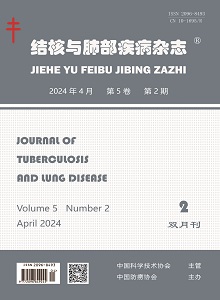Objective To explore the efficacy of different methods on detection of rifampicin-resistant tuberculosis (TB) and to analyze the situation of ropB gene mutation of rifampicin-resistant strains.Methods A total of 511 patients who had been notified as pulmonary TB in 10 county or district TB designated hospitals of Quanzhou City, Fujian Province in 2017, and received 3 kinds of tests as follows: drug susceptibility test with proportional method on solid media (proportional method), reverse linear probe hybridization (GenoType MTBDRplus method) and GeneXpert MTB/RIF (Xpert), were enrolled in this study and their situation of rifampicin resistance was collected. Among 511 TB patients, the ropB gene sequencing of 66 MTB strains with rifampicin resistance, which were detected by one of the 3 test methods at least, were conducted and the situation of the ropB gene mutations in 55 strains, which the sequence of rpoB gene were obtained, was analyzed.Results Among 511 strains tested, the rifampicin resistance rates detected by proportional method, MTBDRplus and Xpert were 38.16% (195/511), 40.51% (207/511) and 45.99% (235/511), respectively. There was no significant difference in rifampicin resistance rate between MTBDRplus technique and proportional method (χ 2=0.590, P=0.442), while it was significantly higher by Xpert technique than that of proportional method (χ 2=6.424, P=0.011). When the test result of proportional method was regarded at the standard, the sensitivity, specificity and consistency rates of Xpert and MTBDRplus to rifampicin resistance were 93.85% (183/195) and 95.39% (186/195), 83.54% (264/316) and 93.35% (295/316), 87.48% (447/511) and 94.13% (481/511), respectively. Among the 55 strains that their rpoB gene sequences were obtained, 36 types of mutation at 17 locations between 371 and 566 loci happened in the ropB gene of 47 strains (85.46%): 13 strains (23.64%) had base deletion or insertion, 7 strains (12.73%) had point mutation and 27 strains (49.09%) had joint mutation. Forty-five strains (81.82%, 45/55) were sensitive to rifampicin by proportional method but rifampicin resistance was detected by molecular susceptibility test (including 14 strains (34.15%, 14/55) of rifampicin resistance were detected by both MTBDRplus and Xpert, 30 strains (54.55%, 30/55) of rifampicin resistance were detected only by Xpert while MTBDRplus results were sensitive to rifampicin, 1 strain (1.82%, 1/55) of rifampicin resistance was detected by MTBDRplus only while Xpert result was sensitive to rifampicin, 8 strains (14.55%, 8/55) were resistant to rifampicin by proportional method but rifampicin sensitive by MTBDRplus and Xpert. The results of MTBDRplus and Xpert test were same in 22 strains, including 14 rifampicin resistant strains and 8 rifampicin sensitive strains; the ropB gene mutations were found in all 14 rifampicin resistant strains, but it happened in 6 strains out of 8 rifampicin sensitive strains. The difference examination results between MTBDRplus and Xpert, were found in 33 strains, of which 31 strains were rifampicin sensitive by MTBDRplus but rifampicin resistant by Xpert.Conclusion Molecular drug susceptibility test method is more sensitive than proportional method in detecting rifampicin resistance. The mutation rate of ropB gene in rifampicin-resistant strains is relatively high. Regardless of which techniques, if the results show rifampicin-resistance, rifampicin-resistant MTB should be considered and other examination methods should be used to confirm it as soon as possible.

 Wechat
Wechat